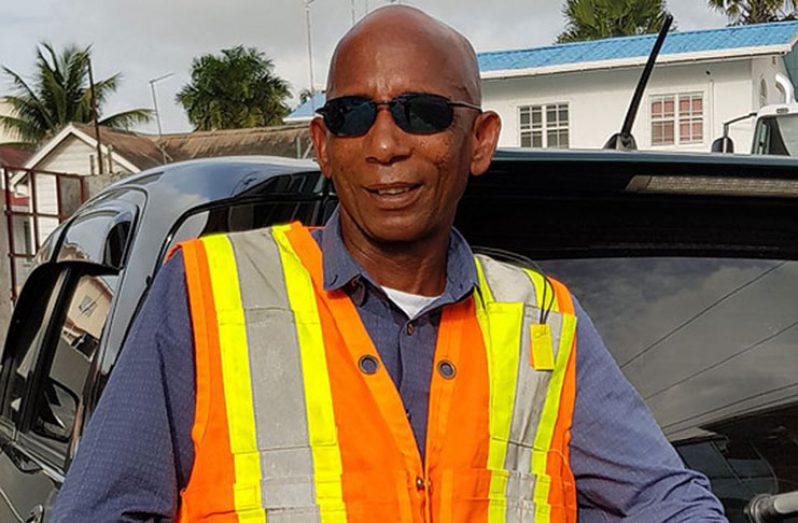Even more crucial with oil production on the horizon
By Gibron Rahim
OCCUPATIONAL health and safety is everybody’s business. This April, even as we observe Occupational Health and Safety Month, it is important to remember the importance of safeguarding the safety, health and welfare of workers. The principles of occupational health and safety become even more vital given that Guyana will soon become an oil producing nation.

The Pepperpot Magazine spoke with Michael Williams who is Founder and President of Safergy Solutions. The firm offers emergency and safety management training and consultancy to companies in the oil and gas and other natural resources industries. “Occupational health and safety is vital for every employee,” said Williams, noting that it is also vital for every member of society. He explained that occupational health and safety does not begin in the workplace but rather, in the home. Older members of a household he said act as “safety officers”, enforcing safety principles that children learn as they are growing up. “If we are unsafe in our practices then we will continue to have ill health and fatalities and the rest of it,” he related.
Williams noted the importance of having the correct safety equipment for the correct job. “It is the right thing to do,” he said, “to maintain the duty of care, due diligence and compliance with regards to safety.” As an example, he explained the danger of a worker who is required to wear hearing protection of a particular specification failing to do so, either due to personal or their employer’s lack of due diligence. Over time, that skilled worker may become deaf due to the lack of the appropriate personal protective equipment (PPE). The correct safety equipment, he said, is critical for work and even in the home.
BREAKING IT DOWN
There is more to occupational health and safety than accessing and using the correct safety equipment, however. Williams explained that there are two indicators of occupational health and safety that always need to be observed – leading indicators and lagging indicators. He related that these two indicators reveal a company’s safety performance. Leading indicators are proactive measures of maintaining a safe work environment and include inspections and training while lagging indicators tell how many workers were injured given numerous factors. Occupational health and safety goals are geared toward improving safety performance and minimising injury through proactive measures.
OIL AND GAS
Given that Guyana will be producing oil as early as 2020, occupational health and safety will become of even greater importance. There are some considerations that Williams noted can potentially hinder Guyana’s efforts to improve its occupational health and safety to meet international standards. He related that one of these is our culture with regard to safety. “The culture of safety in Guyana is in its embryonic stage,” he said.
He elaborated that our safety culture is growing but it is still at a very early stage. Williams pointed out that oil and gas is a high-risk industry. “What Guyana needs to do is to have a human resource pool that is trained and certified with regards to, not only safety, but,the environment as well with a zero harm approach,” Williams recommended. He explained that a zero harm approach indicates no harm to self, fellow employees, company property and the environment.
A trained and certified Guyanese human resource pool will be able to access to employment opportunities. Williams noted that Guyanese are currently going to Suriname and Trinidad to be certified to work in oil and gas. He indicated that there is a need for the University of Guyana through the Institute of Distance and Continuing Education (IDCE) to offer occupational health and safety courses. He also related that there is a whole range of certifying subject areas that are not included in occupational health and safety apart from the law and compliance. “If we are not properly trained and certified, we will not be able to meet the job market requirements for employment.”
UNDERSTANDING OHS
Also speaking to the Pepperpot Magazine was Latoya Jack, co-founder and CEO of Kronoco Safety Solutions which she runs together with fellow co-founder Darrel Gilkes. The company offers occupational health, safety, environment and quality solutions to clients across all sectors of Guyana. Jack noted that it is only through considering the potential impacts of not having proper workplace safety standards and guidelines for work that we can truly understand the significance of occupational health and safety. “There are measurable consequences to our actions when we do not take safety on the job site seriously,” she said.
She questioned the validity of the underlying belief in our society that occupational health and safety does not impact the individual. “The truth is, it impacts all of us equally in a way that we most times fail to realise,” Jack related. She noted that an injury to a single member of the family affects the entire family unit.
While compensation from insurance may partially act to cushion the personal impact of injury, Jack explained that this then creates a burden on society and the state. Citing statistics collected by the International Labour Organisation(ILO), she said that the cost to the individual and society almost always outweighs the cost to the employer.
“A clear understanding of this fact can help us to make better decisions about the way we get the job done,” she stated. The consequences of poor preventative health and safety measures, Jack noted include loss of productive time, loss of limbs or physical damage, vehicle and equipment/tools damage or fatality. She related that workers in agriculture, mining, forestry and construction are most at risk for injury from poor safety, health, and environmental conditions.
Jack explained that PPEs must not only be capable of protecting against known hazards in the work environment. It is also important to ensure that the equipment chosen does not itself pose a risk due to incorrect fit, poor condition or incorrect levels of protection, she said. As an example, she related that there are long-term consequences of wearing boots with a steel toe cap as compared to regular boots or boots with a composite toe cap. “Similarly, regarding respiratory health, inhaling toxic chemicals and particles can have a significant impact on your health as you age,” Jack said. “Getting the right level of protection is crucial to preventing injury even after the job is complete.”
THE NEED FOR TRAINING
Training is essential, Jack explained, to being able to identify hazards, putting preventative measures in place and selecting the appropriate protective equipment for the task at hand. She related, “While there are some hazards that are obvious, it is usually the ones that are not so easily identifiable that have the potential for the most impact.”
Training, basic awareness and understanding of the responsibilities of both employers and employees can make the difference between personal loss and loss time, injury and even fatality, she said.
“Training increases the ability to easily identify the hazards and can adequately aid in the protection of the individual and equipment.”
Jack echoed Williams’ sentiments on the high health and safety risks associated with the oil and gas industry. “It is incumbent upon individuals working in and around the sector to be aware of these dangers,” Jack made clear. Use of the appropriate equipment she said is critical, as is ensuring that individuals working in those sectors are well trained to safeguard the wellbeing of all involved.
“Understanding that oil and gas require full compliance with safety has a direct impact on how we can relate, do business with and support that industry,” Jack emphasised. She also noted the importance of creating and implementing legislation that will place us in a position to support the industry. Overall, “If we are not operating with a safety-first mentality then we will lose the opportunity to partake and reap the full benefit of being an oil producing nation.”



.jpg)








